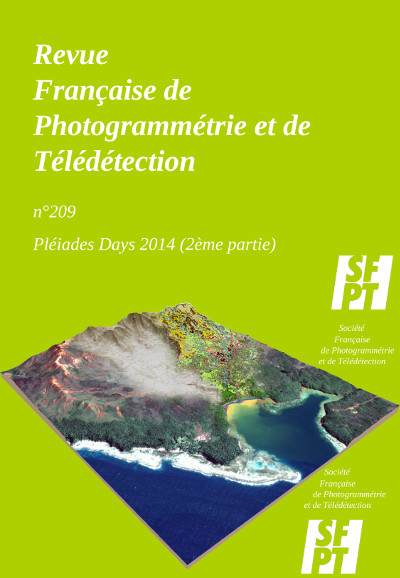Forest recolonization monitoring based on HR and VHR imagery: the case of the Maido forest fire exploiting Pléiades HR and SPOT Kalideos database
DOI :
https://doi.org/10.52638/rfpt.2015.99Mots-clés :
Reunion Island, Maido, vegetation, Pléiades, SPOT, recolonization, forest fire, KALIDEOSRésumé
End October 2011, in a rapid mapping framework, SERTIT followed during 6 days the increase of the forest fires which hit the Maido slopes, Reunion Island, in the hearth of National Park, a UNESCO world heritage site. SERTIT's Rapid Mapping service followed the evolution of this event in “near real time†in a SAFER activation framework, during one week long, with one satellite image acquisition then one map produced every day. According to the prefecture report, the fire burnt more than 2600ha.
After this crisis period, the work turned to the question about the resilience and the monitoring of the vegetation regeneration. In this context, SERTIT is mandated to assess the contribution of very high resolution of Pléiades data acquired theoretically monthly since June 2012 in its thematic commissioning phase framework and of high resolution data from KALIDEOS database (SPOT4 and SPOT 5 images) acquired regularly since 2005. In total, 66 SPOT images and 10 VHR Pléiades or Pléiades-like images have been integrated and exploited.
Data exploitation consists of thematic index calculation, which, combined with field information enabled the mapping of vegetation cover/state and to monitor its evolution before and after fire event.
Then, thanks to serial data acquired during a one year provision plan, the contribution of very high resolution of Pléiades-HR data is analyzed to monitor phenology changes and forest regeneration at plot and/or massif scales.
This study highlights the changes affecting Maido forest since 2005. Indeed, after establishing the vegetation behavior without perturbation (normal seasonal variations), spectral signature analysis derived from indexes shows the forest fire impact on vegetation but also a recolonisation of the massif. In complement, monitoring this “regeneration†with VHR Pléiades data, texture provided by such images is useful to confirm this forest recovery and to qualify it. In reality, the phenomenon observed corresponds as much to recolonization than regeneration because of the different behavior and appearance of the new vegetation. Cooperation with local actors is necessary to check field information. Furthermore, stereo Pléiades data were acquired over the quasi-totality of the Reunion Island. After digital surface model restitution at 50cm would be extract vegetation structure and erosion risk information.
Téléchargements
Références
Cadet T, 1980. La végétation de l'île de La Réunion. Imp. Cazal, 312 pp.
Baret F, Guyot G, 1991. Potentials and limits of vegetation indices for LAI and PAR assessment. Remote Sensing of Environment 35:161-173.
Chabaane Z. and al, 2005. Télédétection et analyse spatiale de la régénération forestière post-incendie dans le massif de boukornine au sud de Tunis. Télédétection, 2005 vol. 5, n°1-2-3:161-181
Rouse JW and Haas R.H, 1973. Monitoring vegetation systems in the great plain with ERTS. Third ERTS Symposium, 1:309-317
Téléchargements
Publié-e
Comment citer
Numéro
Rubrique
Licence
Les auteurs conservent les droits d'auteur et accordent à la revue le droit de première publication de l'œuvre sous une licence Creative Commons Attribution (CC-BY) 4.0 qui permet à d'autres de partager l'œuvre avec une reconnaissance de la paternité de l'œuvre et de sa publication initiale dans cette revue.






